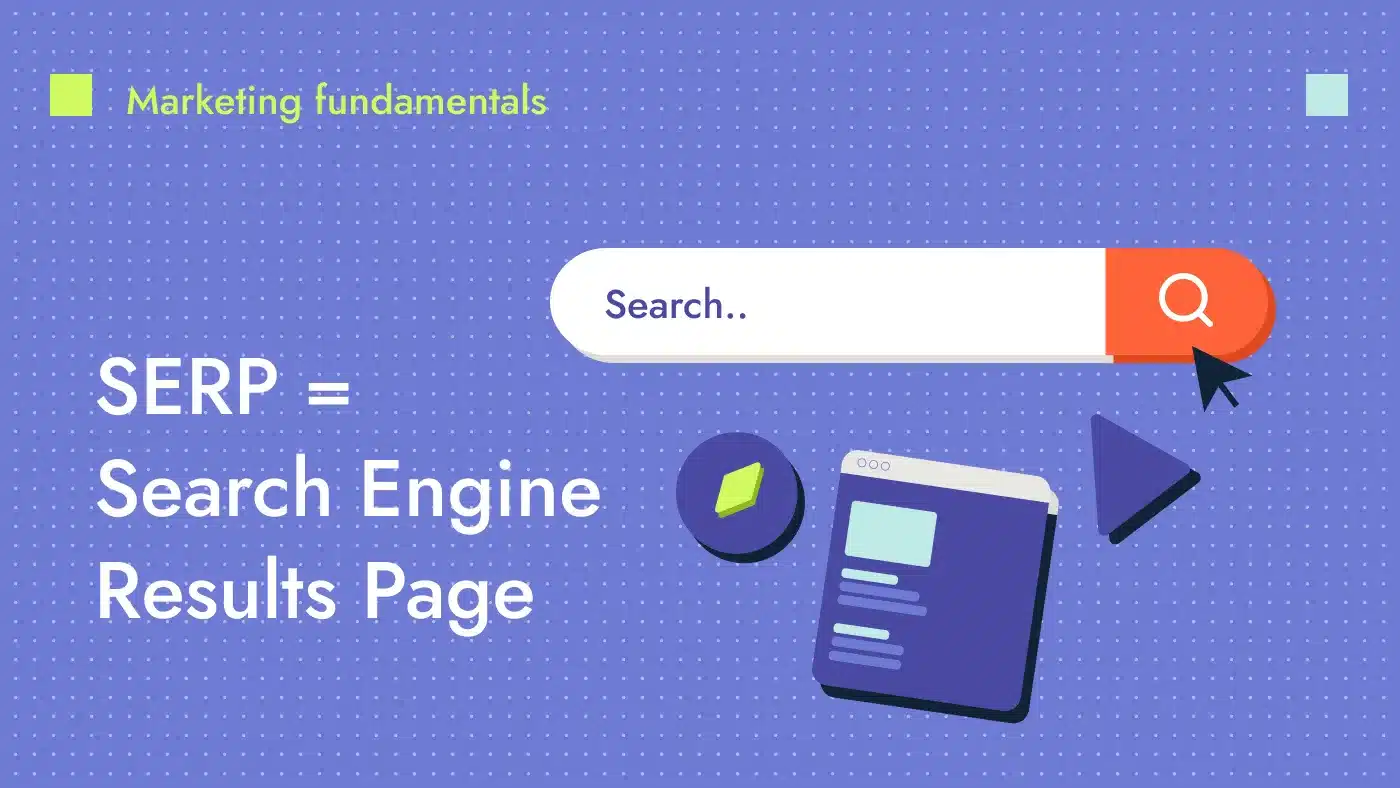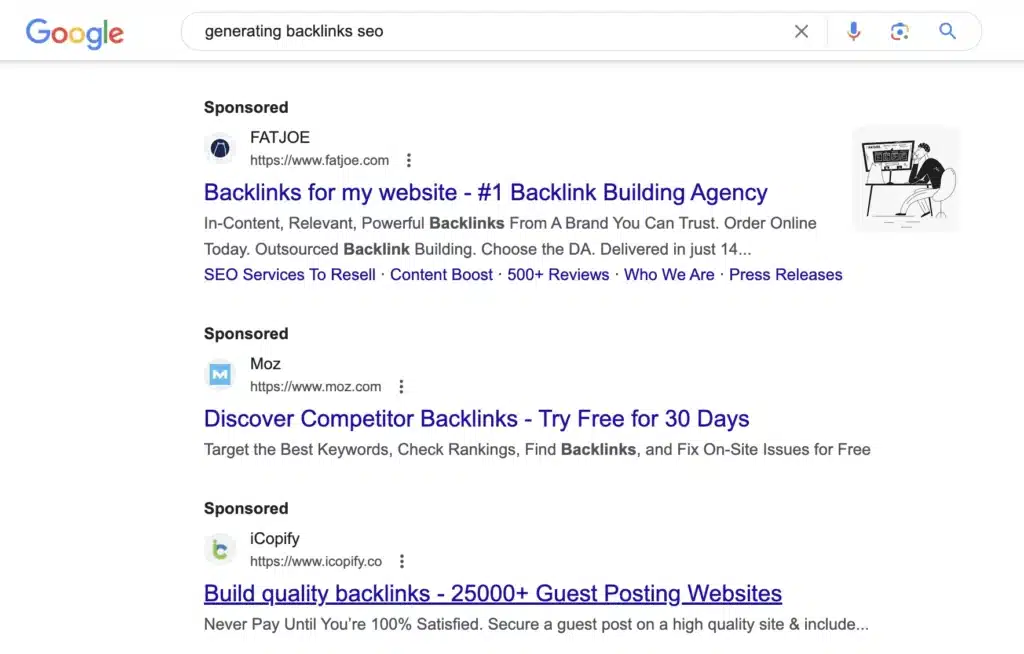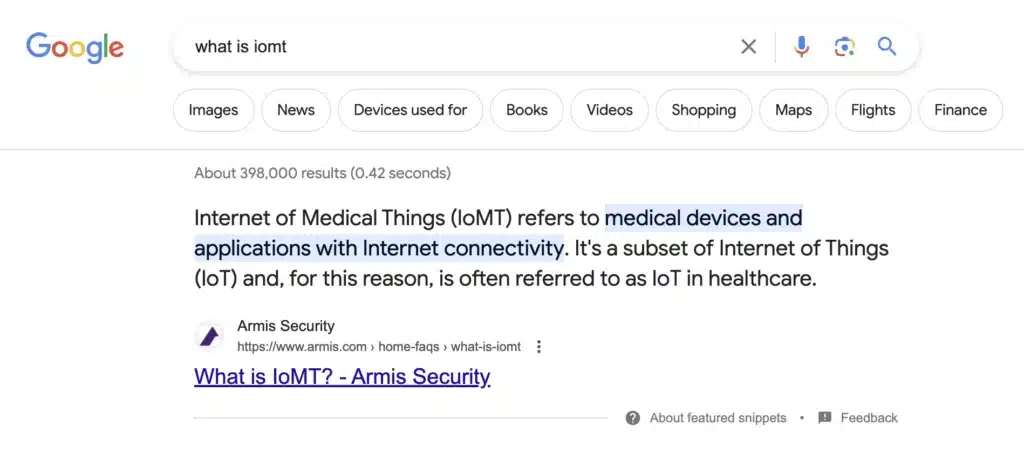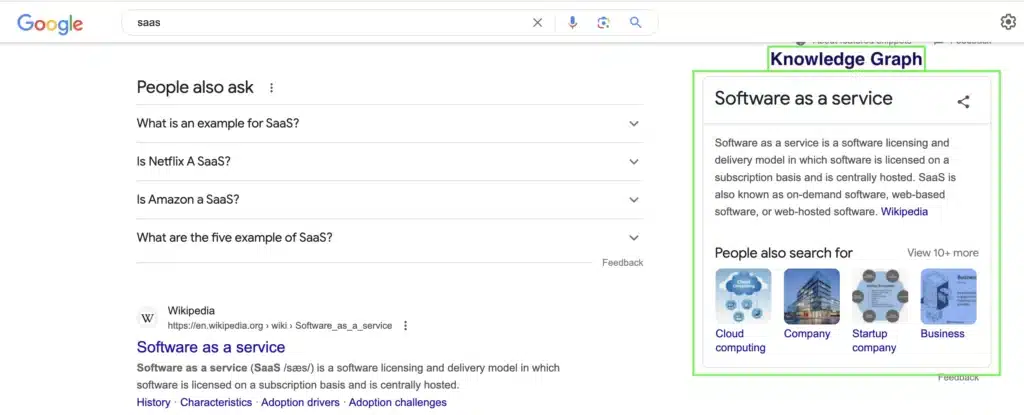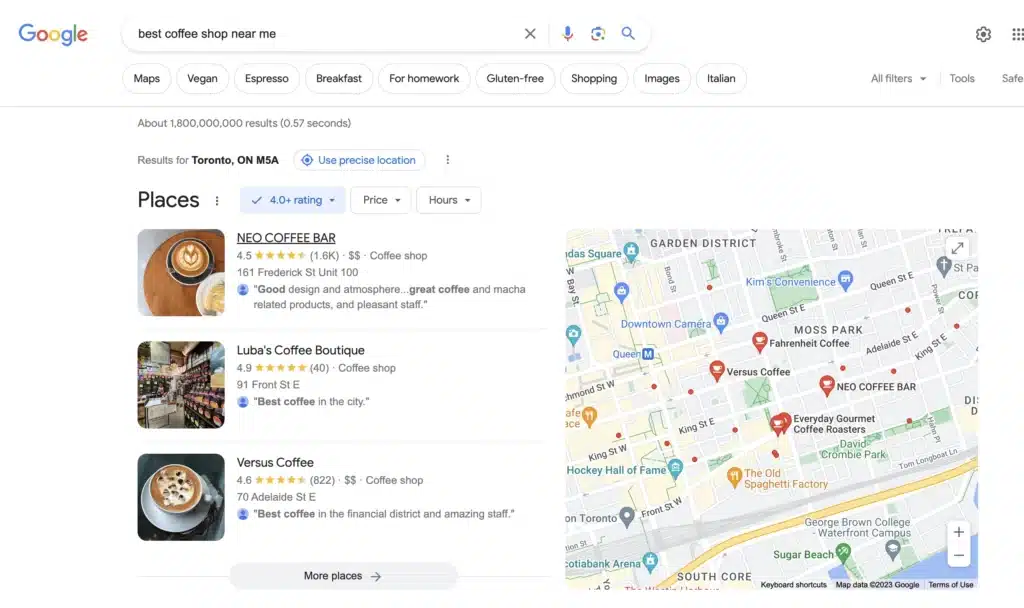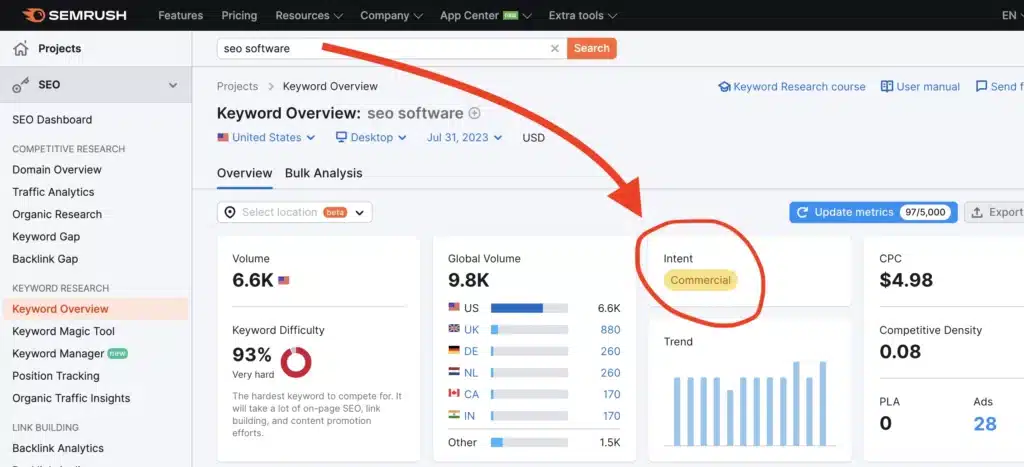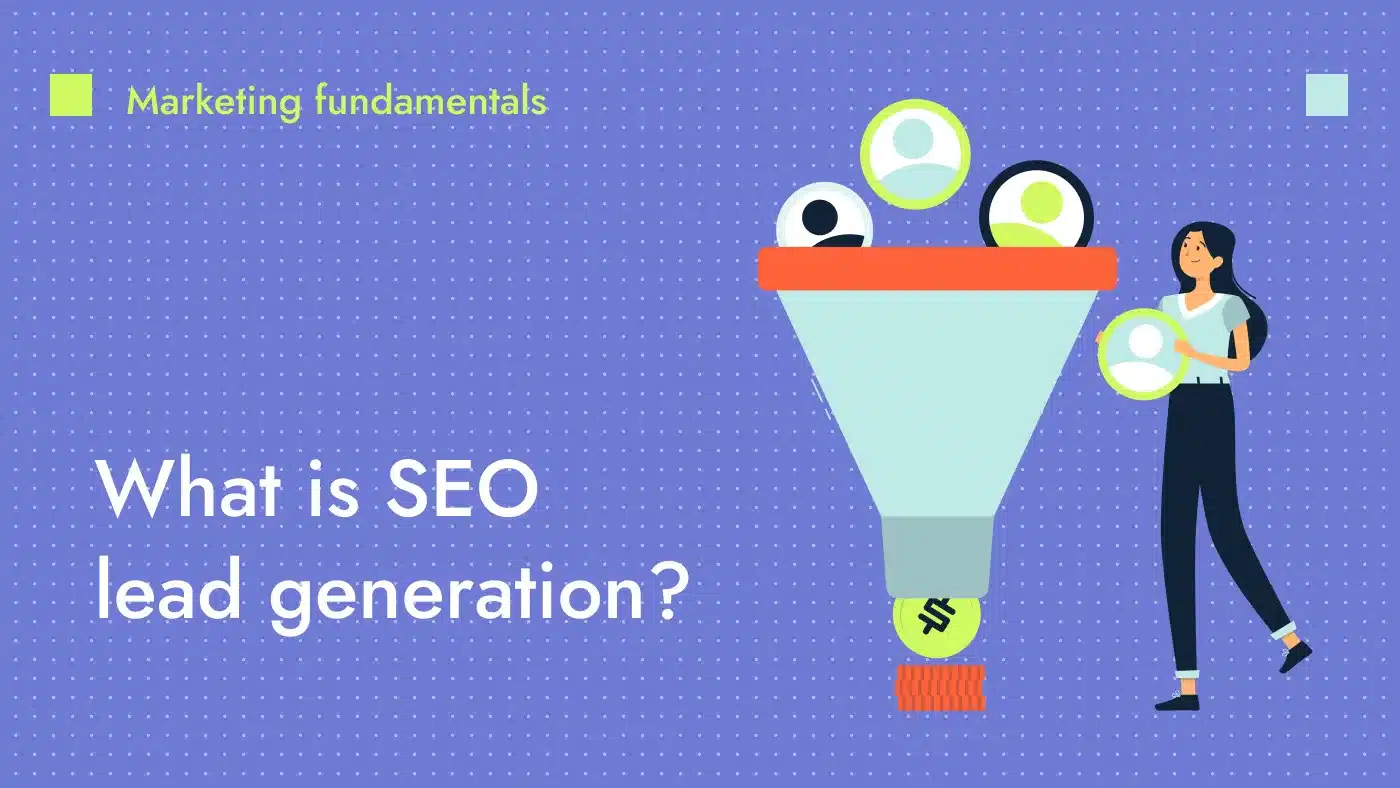Search engine results page (SERP) is the page displayed by search engines like Google, Bing or Yahoo in response to a user’s query. The visibility and ranking of a website in the SERP directly impact organic traffic and potential customer acquisition – that’s why achieving SERP real estate is a pillar of successful search engine optimization (SEO) programs.
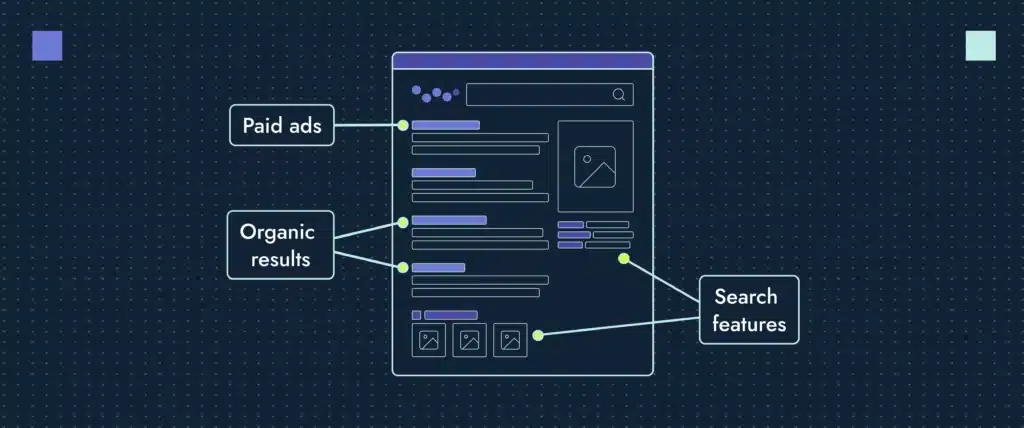
Understanding the anatomy of SERP
The anatomy of SERP refers to the layout and elements displayed when users make a search. It typically consists of organic search results, paid advertisements, featured snippets, knowledge panels and other search features. Let’s take a closer look:
Organic search results
A fundamental component of SERP is the unpaid search results displayed based on their relevance to the user’s query. They are organic listings based on search engine algorithms rather than paid advertisements.
Because users place higher trust in organic results, optimizing for them is crucial to enhance visibility and attract qualified traffic. A high organic ranking on SERP is also a clear indicator of a website’s authority and credibility.
Here’s an example of an organic search result for “webp for SEO”:
🚀 Ready to boost organic traffic and improve rankings? Check out our post on optimizing your blog posts for organic search.
Paid advertisements
Google positions paid search results, also known as pay per click (PPC) ads, at the top of the SERP, with four on desktop and three on mobile browsers. By investing in paid advertisements, businesses can drive traffic to their web pages.
Because more than one business competes for the same keywords, Google assesses bid amount, page quality, ad quality and relevance to determine which ads appear on the first page. If your site is deemed superior and relevant, it gains visibility on the first page.
Below is an example of a paid search result for the search term “saas security platform”:
Featured snippets
Also known as “position zero,” a rich snippet is a type of search result in SERPs that provides additional, structured information extracted from a webpage, often in the form of star ratings, reviews, images and other content, enhancing its visibility and chances of conversion. In fact, a study by Ahrefs finds that websites appearing in featured snippets experienced an average increase in CTR of 8.6%.
To have a featured snippet, your site must already rank on the first page of results. Here is an example:
💡 Looking to optimize your search engine results? Here’s the complete list of Google rich results.
Knowledge graph
The knowledge graph is a box containing relevant information from various sites that appears on the right side of the SERP. For businesses, getting featured in the knowledge graph can enhance their online reputation.
Here’s an example of a knowledge graph for the search term “saas”:
🤴🏻 Want to be perceived as a thought leader? Read our blog post on how to leverage SEO to improve your brand perception.
Local pack
A local pack appears when a search query has local intent, displaying a map and three local business listings. For businesses with a physical presence, optimizing for local SEO is crucial to appear in the local pack section.
For example, a quick search on “coffee shops near me” shows the following results:
The importance of tracking SERPs in SEO
Think of SERPs as virtual battlefields where websites compete for visibility and user attention. In the context of enterprise SEO, SERP is important because the position of your URL on the search engine page directly influences your online share of voice and click through rates (CTRs).
To put it in simple terms:
Higher SERP = Higher number of clicks
Search engines reward websites with relevant and accurate content. Understanding the various factors that impact rankings is critical to inform your SEO strategy.
Let’s look at how SERPs influence SEO:
Maximizing impact on CTRs for a boost in traffic
A website’s position on SERP directly correlates with its CTRs. According to a Sistrix study, the first organic result on Google receives an average CTR of 28.5%, while the tenth result receives only 2.5%. This data illustrates the importance of aiming for higher organic rankings to drive more organic traffic to your website.
Identifying keyword rankings to outpace the competition
Knowing how your targeted keywords rank against competitors helps refine your SEO strategy. Focus on crafting content based on keywords where your competitors have a strong presence, but aim to provide additional value they don’t offer. Likewise, identify the areas where you hold a competitive advantage to capitalize on them strategically.
Understanding user intent to inform content strategy
SERP provides valuable insights into user intent, helping businesses align their content and offerings accordingly. Different types of SERPs indicate what users search for and what content type Google deems most relevant for a particular query.
Here are the four types of search intent:
- Commercial intent: The user seeks to purchase or engage in a specific commercial activity.
- Informational intent: The user seeks information or answers to questions.
- Transactional intent: The user knows more about a product or service before completing an online transaction or action.
- Navigational intent: The user intents to locate a specific website or page.
For instance, creating a dedicated product or service page on “SEO software” would be appropriate given that the search intent for this keyword is commercial. However, for the topic “how to improve your SEO,” a better strategy would be to create a detailed blog or a guide because this long tail keyword has an informational intent.
So how do you know the intent of queries?
You can use SEO tools such as Semrush, which typically gives you information on keyword volume, difficulty, cost per click and, yes, search intent.
Another tactic is to simply google the keyword and see what type of results you get:
- Are they blog posts or guides? In that case, make sure to create information content.
- Are they product pages or review websites? Then the intent is likely commercial.
SERP best practices for B2B
SERP best practices involve strategic keyword targeting, creating high quality and relevant content, optimizing meta tags, enhancing website performance and building authoritative backlinks. Additionally, leveraging schema markup to enhance search result visibility and incorporating featured snippets optimization can further improve SERP performance.
Here’s where you can start:
1. Perform thorough keyword research
Robust keyword research is the foundation of any successful SEO strategy. Identify relevant and high-intent keywords that align with your products or services. Use keyword research tools like Google Keyword Planner, Semrush or Ahrefs to discover the most valuable keywords for your industry.
Perform competitive analysis to gain insights into their keyword strategies, top-performing content and backlink profiles. Understanding their strengths and weaknesses can help you refine your SEO approach and identify opportunities to outrank them on SERP.
🔎 Looking to improve your keyword strategy? Read our detailed guide on keyword harvesting.
2. Create high quality content
Are you including relevant keywords? Are you answering the questions your customers may have? Is your content easy to find and read? These are some of the questions you must brainstorm as you develop your content writing strategy.
Your content should address the needs of your personas and provide valuable insights to generate demand and conversions.
📝 Want to enhance your website content? Check out this detailed guide on SEO writing for beginners.
3. Craft compelling metas
Metadata is another key component in your SEO toolkit. Optimize your meta titles and descriptions for search engine keyword rankings. A clear meta title provides a brief idea of the content, while the meta description offers a preview of what readers can expect when clicking on your link. Well-written SEO metas invite users to click, enhancing your traffic and CTRs.
🎮 Check out our SERP simulator that helps you preview custom search results for your metas.
4. Leverage structured data markup
Optimize your content to answer common questions related to your industry concisely. Integrate structured data markup using JSON-LD to give search engines more context about your content, which can lead to featured snippets in SERPs. This way, you increase your chances of ranking and establishing authority.
📖 Want to learn more about structuring your data? Read our SEO guide on markup schemas.
5. Optimize for technical SEO
Optimizing for technical SEO involves fine-tuning various technical elements on your website to improve visibility and performance. Key areas of focus include ensuring proper website indexing, optimizing site speed and mobile-friendliness, implementing structured data markup like JSON-LD, creating an XML sitemap, and optimizing URL structures.
Technical SEO plays a crucial role in enhancing user experience. Google prioritizes mobile-friendly websites in the page of results. So focus on responsive website design. Statista reports that in the first quarter of 2033, mobile devices accounted for 58.33% of global website traffic. Optimizing your website for mobile devices is vital with most online traffic comprising mobile users.
🗃️ Preparing for a site audit? Read our guide on enterprise SEO audit for B2B websites.
Let’s get high on SERP
Search engines frequently update their algorithms, making SEO strategy implementation challenging. SERPs may appear complex, but there are actionable steps you can take to achieve a higher rank and attract organic traffic.
Now that you understand why the search engine results page is important, it’s time to start optimizing your SEO efforts and ranking high. If you need help to reach greater heights on SERP, give us a shout.


